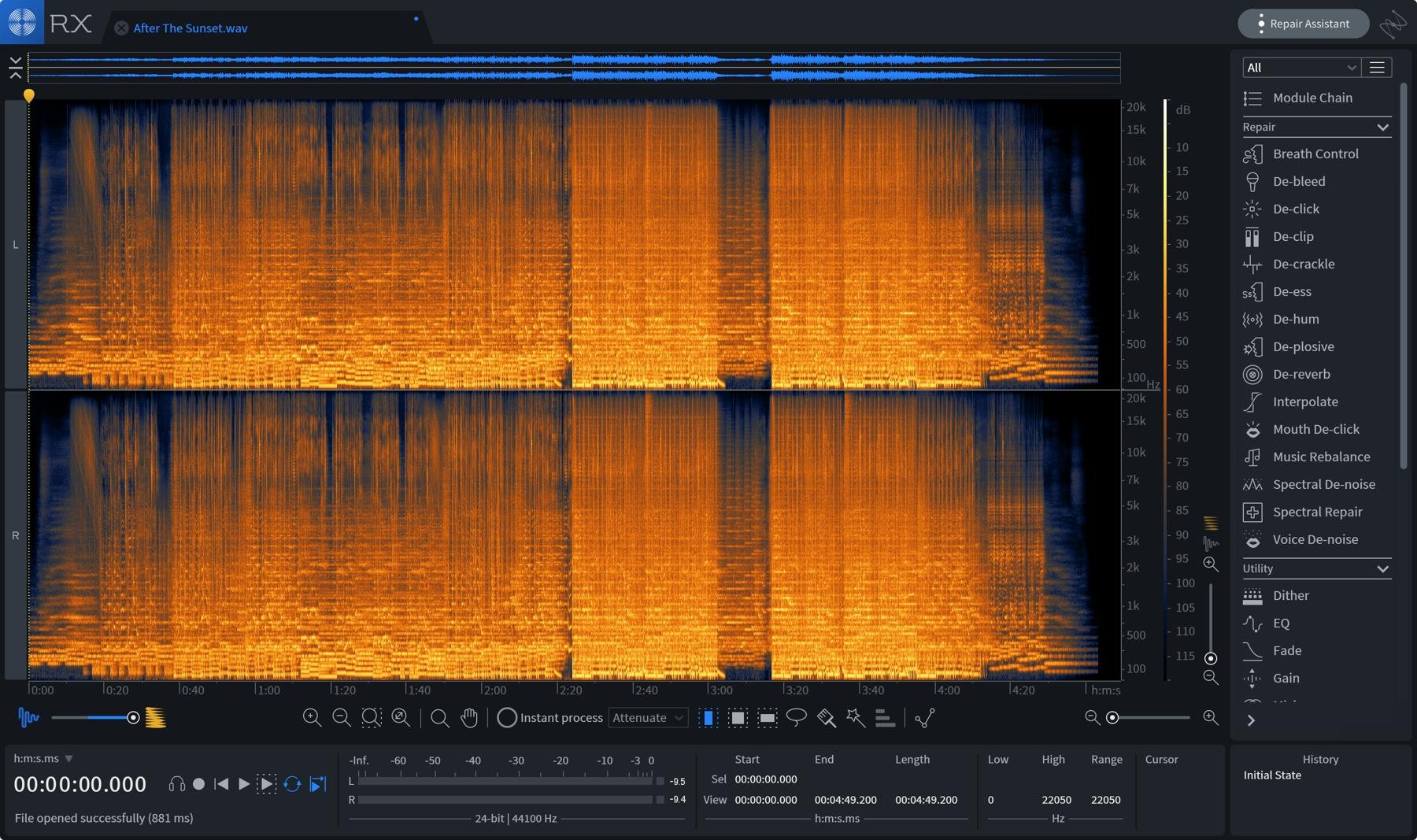Improvements & optimizations across all of RX. Find All Similar: Locate and identify problem sounds like beeps, bird chirps, or clicks more quickly and accurately with the addition of Find All Similar. Module List Filters: select the features you use most often and save them as presets for different workflows. Nov 05, 2019 Spectral Repair was the team's most used module. “A lot of misc sounds like car drive-bys were a challenge,” says Henshaw. “All you want is the car passing by, but there might be bird chirps or other noises.' 'It’s easy enough to go in with Spectral Repair and remove individual bird chirps. Portable iZotope RX 7 Audio Editor Advanced 7.00 The professional’s choice for audio repair raises the bar with game-changing new features for music and post production. Trusted by the top audio pros around the world, RX is built on years of extensive research in advanced digital signal processing and machine learning. Olsen presented results showing an excess of events producing two photons at 7. Thanks to the infinite wisdom of corporate America, he was put in a place where he could do less harm—management! Maybe take a few aerobic classes or something. This helps pinpoint the location of elusive bird chirps, tones, or other problems.

Standalone Workflow
- Open the audio file in the RX Audio Editor or send it via RX Connect.
- Open the Corrective EQ module [Option+Shift+7].
- Engage a high-pass filter to remove the most apparent rumble and to make any other static filtering gestures before applying the De-noiser. In this example, we also reduced some of the prominent ‘S’ frequencies around 7 kHz and a tonal component of the background noise around 800 Hz.
- Then open the De-noise module [Shift+4]. The De-noise module has two modes: Dialogue and Spectral. We’ll use Dialogue mode for this example.
- Inside the Dialogue tab, we can set the De-noise algorithm to adjust automatically (which is used for sounds that vary throughout the program), or we can manually learn a noise profile that the algorithm can reduce constantly across the program. Since this example has steady background noise throughout, we’ll start in Manual mode.
- Now we’ll Learn a noise profile by selecting a passage of at least one second of pure noise in your audio and clicking Learn.
- The six Threshold Nodes will automatically set themselves based on the noise profile. These nodes represent different parts of the frequency spectrum, and their thresholds can be adjusted (and automated) individually.
- Click Preview and adjust settings to the program material, starting with the Reduction slider and then adjusting multiband threshold nodes if necessary.
- Once you have arrived at the optimal setting for your audio, click Process.
From tire screeches to dog barks and public transit beeps, noise is a consistent fixture of the city soundscape. While these sounds tend to blend into the background of daily life, they are hard to ignore when captured by a microphone.
For this reason, noise reduction is a necessary part of making music. In a given session, we clean up hiss and rumble from home recordings, pull out clicks and pops from vocal performances, and dull pinging frequencies that poke out too far in the mix.


See Full List On Gdever494.weebly.com
But we don’t always need to be so critical of noise. Since the beginning of recording history, it has been used to enhance instruments and even create new categories of music. Furthermore, too much noise reduction can strip a sound of its natural character.
To reflect this, we’ll look at the different types of noise common in audio and how to make the call to keep or remove them. While the tips will be from the perspective of music production, they are also applicable to post for film and TV.
Types of noise
There are many different kinds of noise that can disrupt music. If you can identify the type of noise it is, you will have an easier time picking an appropriate removal tool. Here are five noise categories and the RX 7 modules to remedy them.

Omnisphere 2. 5 Alternative - Skieyregistry
Impulse noises are short clicks and pops that vary in frequency and loudness throughout a recording. Mouth noises fall into this category and they are almost always removed due to their distracting quality. Some artists, however, deliberately include intermittent crackle and scratches in their music for a vintage effect or as part of a glitch sequence. RX Repair Assistant makes it easy to detect and eliminate clicks (as well as clipping, noise, and more).